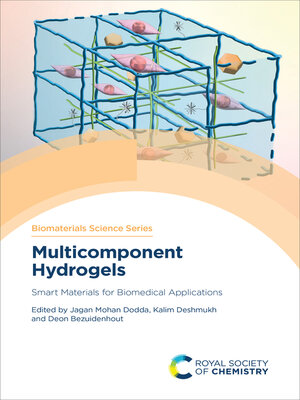
Sign up to save your library
With an OverDrive account, you can save your favorite libraries for at-a-glance information about availability. Find out more about OverDrive accounts.
Find this title in Libby, the library reading app by OverDrive.



Search for a digital library with this title
Title found at these libraries:
| Loading... |
Hydrogels are highly hydrated three dimensional networks with the ability to mimic the extracellular matrix of bodily tissues and have thus found application in a wide range of biomedical applications. Unique physiochemical properties such as biocompatibility, water permeability, stimuli responsiveness and self-healing characteristics make them especially useful for use as scaffolds and matrices drug delivery, tissue engineering/regeneration and sensing. Their weak and brittle nature, however, often limits their widespread application where improved mechanical strength is required.
To resolve this problem, there has been a significant amount of research into the improvement of their mechanical properties. Among these efforts, versatile multicomponent hydrogels have received much attention as their physiochemical properties can be structurally engineered to provide a wide range of desired properties. These multicomponent formulations also allow for the combination of natural and synthetic polymers, which offers the scope to exploit the advantages of each component, with the synergistic effects resulting from mutual interactions.
This book critically discusses the fundamental chemistry, synthesis, characterisation, physiochemical and biological properties of various types of multicomponent hydrogels. It reviews the different strategies employed in designing and synthesizing cutting-edge multicomponent hydrogels and their key applications in biomedical fields.
The work is suitable for researchers working in the specific area of multicomponent hydrogels, and also more generally for those working in materials science, biomedical engineering, biomaterials science and tissue engineering.






